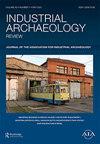制砖历史与遗产
IF 0.1
4区 历史学
0 ARCHAEOLOGY
引用次数: 1
摘要
但直到20世纪,随着适当燃料的出现才崭露头角。前砖厂作为遗产资产的重要性在最后一章中进行了总结,该章展示了英国现存的一些最好的例子。还强调了这些重要遗址的持续损失,并强调了保护那些幸存遗址的必要性。本文章由计算机程序翻译,如有差异,请以英文原文为准。
Brickmaking History and Heritage
but did not come to the fore until the 20th century with the availability of appropriate fuels. The signi fi cance of former brickworks as heritage assets is sum-marised in the fi nal chapter, which showcases some of the best surviving examples in Britain. The continued loss of these important sites is also highlighted and the need to protect those sites that do survive is emphasised.
求助全文
通过发布文献求助,成功后即可免费获取论文全文。
去求助
来源期刊

Industrial Archaeology Review
Multiple-
CiteScore
0.40
自引率
66.70%
发文量
26
期刊介绍:
Industrial Archaeology Review aims to publish research in industrial archaeology, which is defined as a period study embracing the tangible evidence of social, economic and technological development in the period since industrialisation, generally from the early-18th century onwards. It is a peer-reviewed academic journal, with scholarly standards of presentation, yet seeks to encourage submissions from both amateurs and professionals which will inform all those working in the field of current developments. Industrial Archaeology Review is the journal of the Association for Industrial Archaeology. Published twice a year, the focal point and common theme of its contents is the surviving evidence of industrial activity.
 求助内容:
求助内容: 应助结果提醒方式:
应助结果提醒方式:


